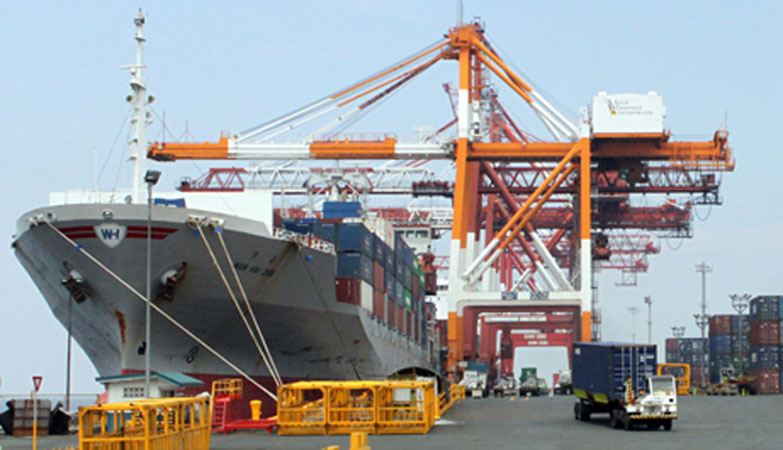
Upgrade to High-Speed Internet for only ₱1499/month!
Enjoy up to 100 Mbps fiber broadband, perfect for browsing, streaming, and gaming.
Visit Suniway.ph to learn
 ASIANTERMINALS.COM.PH
ASIANTERMINALS.COM.PHBy Matthew Miguel L. Castillo
The Philippines’ trade deficit in goods further slimmed to a three-month low in May as exports grew while imports continued to fall, the Philippine Statistics Authority (PSA) reported on Friday.
Preliminary data from the PSA showed the country’s balance of trade in goods — the difference between the values of exports and imports — reached a deficit of $3.29 billion in May from the $4.73-billion gap in the same month last year.
It also slowed down from the revised $3.97-billion deficit in April.
The trade deficit in May was the narrowest in three months or since the $2.97-billion gap recorded in February.
The country’s monthly trade balance has been in the deficit for 10 years or since the $64.95-million surplus recorded in May 2015.
May’s figure brought the trade-in-goods deficit to $19.68 billion in the five months to May, narrower than the $20.72-billion gap in the same period last year.
“Exports managed to grow solidly, helped along by robust demand for electronics as well as a healthy gain for agro-based exports,” Metropolitan Bank & Trust Co. Chief Economist Nicholas Antonio T. Mapa said in an e-mail.
He added that imports shrank in May due to lower value of oil imports, while raw materials inbound shipments fell.
“Crude oil prices are down on a year-on-year basis, even after the recent uptick in crude oil. Raw materials were lower but we did see a bright spot for consumer imports which was positive, reflecting a still upbeat outlook for household spending this year,” Mr. Mapa said.
Outbound shipments of Philippine-made goods expanded by 15.1% year on year to $7.29 billion in May.
This was export’s fifth straight month of expansion this year and the highest since 28.2% climb recorded in April last year.
By value, May’s export haul was the highest level in 31 months or since the $7.75 billion logged in October 2022.
The country’s export of electronic products, which include semiconductors, amounted to $3.85 billion in May, up by 8% from $3.56 billion a year ago.
This segment remained the country’s top export commodity after accounting for more than half of total exports in May.
Outbound sales of other manufactured goods climbed 70.6% to $583.06 million, while other mineral products inched up by 0.9% to $308.16 million.
The United States cornered most of Philippine-made goods in May with $1.104 billion (15.3% share). It was closely followed by Hong Kong ($1.108 billion or 15.2% share) and Japan ($1.04 billion or 14.3% share).
Meanwhile, the country’s merchandise imports continued to decline for the second straight month in May after contracting by 4.4% annually to $10.58 billion.
It was the sharpest fall in 11 months or since the 7.2% drop recorded in June 2024.
May’s import value was the lowest in three months or since the $9.76 billion in February.
Imports of electronic products went up by 8% to $2.35 billion in May. This accounted for more than a fifth of the total import bill in May.
Mineral fuels, lubricants and related materials, meanwhile, shrank by 39.6% to $1.17 billion in May, while imports of transport equipment rose by 17.1% to $1.05 billion.
China was the country’s top source of imports with $3.15 billion (29.7% share) that month. Indonesia trailed with $904.27 million (8.5% share) and Japan ($807.89 million or 7.6% share).
Exports climbed by 10.8% to $34.20 billion in the five months to May, while imports increased by 4.4% to $53.87 billion. These year-to-date expansions were above the government’s downwardly revised targets of a 2% drop in exports and a 3.5% growth in imports this year.
“Year to date export numbers have been encouraging; however, we remain cognizant of looming risks in the form of the US imposed global tariffs, which could slow demand for exports from the Philippines or exports from other countries that make use of Philippine made components,” Mr. Mapa said.
“We are also keeping our eye on import trends, as weak import growth is largely tagged to year-on-year lower oil prices and modest gains in capital imports,” he added.
On the other hand, Philippine Exporters Confederation, Inc. President Sergio Ortiz-Luis, Jr., said that the Philippines is well-positioned amid trade tensions and should look to “maintain its posture” for optimal growth rates in imports and exports for the rest of the year.
US President Donald J. Trump declared increased reciprocal tariffs on the majority of the country’s trading partners in April. Philippine exports are subject to the second-lowest rate in Association of Southeast Asian Nations at 17%.
However, the implementation of these tariffs has been suspended for 90 days, lasting until July, while a standard 10% tariff continues to apply.
Mr. Ortiz-Luis added that the conflict between Israel and Iran will have minimal effects on the country’s trade performance because of the truce struck by the two countries.
“The only problem is fuel,” he told BusinessWorld in a phone interview. “If [prices] are going to go down next week, hopefully the situation can be [stabilized].”
A war broke out in the oil-rich Middle East after Israel attacked Iran’s nuclear sites last June 13. US’ Mr. Trump announced a ceasefire last week, easing concerns over potential disruptions to the critical Strait of Hormuz shipping corridor, Reuters reported.




